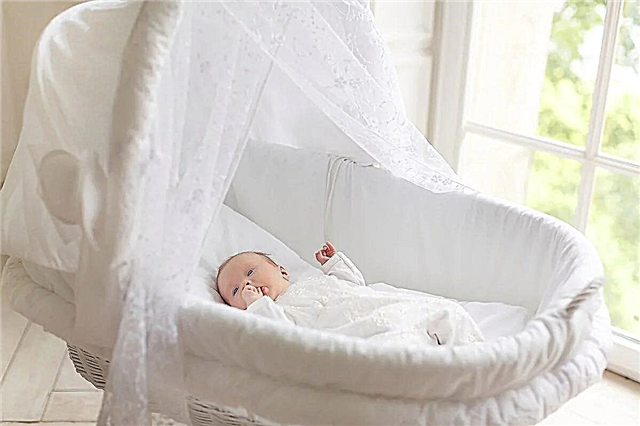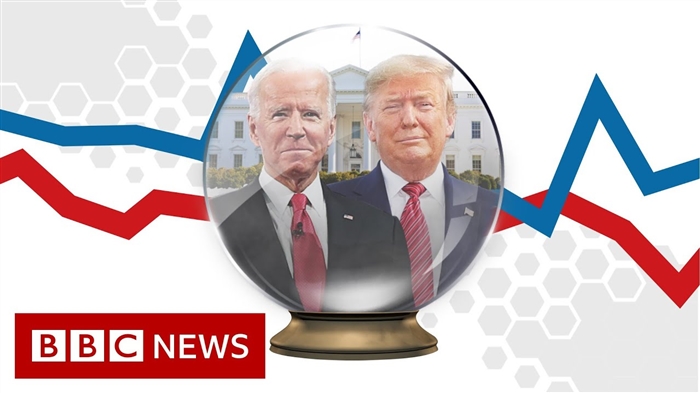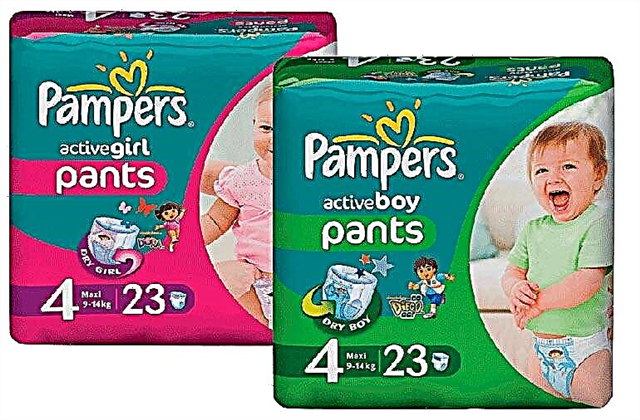Hyperthermia is a natural reaction of the body, which is most often observed when third-party agents (bacteria, viruses) enter it. Most pathogenic microbes die when the body temperature rises to 38-39 ° C. Thus, a person fights infection and gains immunity.

Rectal temperature measurement in a baby
Council. In children under two years old, it is better to take temperature measurements by the rectal method. Experts do not recommend determining this indicator in other places of the body, since the results obtained will be less reliable.
Where to measure the temperature
Before using antipyretic drugs, you need to make sure that all measurements are made correctly. It should be borne in mind that not all places on the body have the same temperature.
The following values should not cause concern:
- in the mouth - 36.6-37.2 ° C;
- in the armpit - 36.0-37.3 ° C;
- in the rectum - 36.9-38.0 ° C.
Hyperthermia is an extremely dangerous condition, especially for one-year-old babies. Therefore, each parent should know the algorithm of actions if the child has a temperature of 38 degrees. After all, such a condition can be associated with infectious and non-infectious pathologies (neuroses, heat stroke, cystitis, allergies, stomatitis, hormonal disorders, teething, trauma, etc.).
Possible reasons
Energy is constantly generated in the human body, the heat balance is regulated by the hypothalamus (the main organ of the endocrine system). It is he, and not directly the bacteria and viruses themselves, that causes an increase in temperature so that the body begins to synthesize bioactive substances required to fight infection. Such a mechanism of action helps to cope with the disease in the shortest possible time.
If the temperature does not rise, then the body does not produce enough γ-interferon. When the temperature is artificially brought down, this substance is also not formed, which negatively affects the immune resistance of the body.

Why the child has a fever, the pediatrician can explain
An increase in temperature can be observed against a background of various factors:
- Colds. Respiratory pathologies have pronounced signs of the respiratory system. Often, such diseases provoke a sharp rise in body temperature up to 39 ° C. In this case, the child may also have other symptoms: chills, apathy, general malaise, headaches and muscle pains. The feverish state lasts for 2-5 days, after which catarrhal phenomena appear (runny nose, cough). The child needs to be shown to the pediatrician, since this symptomatology is typical for other infections (measles, chickenpox, mumps, whooping cough, rubella).
- Intestinal infection. If a child has a temperature of 38 for several days, then this may be due to an intestinal infection. As a rule, with this development of events, the baby loses appetite, nausea or even vomiting appears. In infants who eat formula or breast milk, this condition may be caused by poor hygiene.
- Infectious pathologies. The presence of acute inflammatory processes (otitis media, cystitis, sinusitis, tonsillitis, pneumonia, pyelonephritis) in the baby's body provokes a sharp rise in temperature. If the child has a temperature of 38 or higher, you need to see a doctor. Only he will be able to find the true cause of the ailment and prescribe adequate treatment.
- Heatstroke. If the apartment is stuffy, hot, or the mother simply overdid it and dressed the child very warmly, then his basal temperature may rise. At the same time, the toddler looks sluggish, as with a disease. Pediatricians all over the world recommend maintaining the temperature in the room no higher than +20 ° C. This will allow not only to avoid banal overheating, but also to strengthen the body's immune resistance.
- Allergies and stress. In young children, fever can occur with allergies and stress. Most often this is observed with the introduction of fruit purees, cereals and dairy products into the baby's diet. When faced with this situation, a doctor's consultation is needed.
- Teething. Often, in one-year-old babies, the body temperature rises at night. The reason for this condition may be teeth. During this period, the baby's gums swell and salivation increases.

When overheated, the child looks lethargic, often naughty
Clinic at 38 degrees
By the behavior of the child, it is easy to suspect an increase in his temperature. With hyperthermia, the following symptoms are observed:
- anxiety;
- lethargy;
- general malaise;
- thirst;
- apathy;
- capriciousness;
- lack or decrease in appetite.
If a child has a temperature of 38, and all limbs (arms, legs) are cold, then this indicates the development of vascular spasm. Some children have febrile seizures. In this case, the child suffers from suffocation and hypoxia, he can bite his tongue, and bubbly discharge appears from the oral cavity. Such symptoms are extremely rare, but parents should be prepared for such a course of development of the disease.

In the first weeks of life, a child's body temperature of 37-37.5 ° C is considered normal
Note. Depending on the type of fever, the baby's skin may be pale and cool or hot and red. Often, at a high body temperature, the child has seizures.
When to lower the temperature
It is necessary to bring down the fever in a newborn if:
- the temperature rises rapidly;
- fever accompanied by vomiting and diarrhea;
- previously, at a body temperature of 38-39 degrees, convulsions were observed;
- increased agitation, delirium, convulsions;
- cold heels or palms, pallor, chills;
- it hurts the kid to go to the toilet;
- confusion of consciousness;
- the child has a history of neurological pathologies or serious diseases of the heart, pancreas, liver or kidneys;
- the baby very badly tolerates the temperature, which has not even reached 38 ° C.
Note. It will be easier to bring down the temperature at home if you create an optimal temperature regime in the room (18-20 ° C and 50-60% humidity). To increase sweating, replenish fluid loss and cleanse the body of toxic products, the patient needs to provide plenty of drink. In addition, to reduce body temperature, it is necessary to use air baths and wet wipes with warm water.
How to treat a child at a temperature of 38
If the child has a temperature of 38 and begins to rise rapidly, and it is not possible to bring it down with home methods, you need to use medication. There are general recommendations at what temperature children are given antipyretic. If the child's age is from 0 to 2 months, then medications are given already at 38 ° C. If the child is more than three months old, then it is necessary to wait for the 39 ° C mark, after reaching two years, the antipyretic is used at a temperature above 39.5 ° C.

Children like to sleep a lot when they feel unwell.
Important! Antibiotics are prescribed by a doctor only when other methods are ineffective. Sometimes pediatricians prescribe these drugs for 3-4 days of illness. No antibiotic can cope with the virus, they have only an antimicrobial effect.
Antipyretics for children under one year old
Pharmacists divide all antipyretic drugs into several categories. Their classification is based on the mechanism of action of a particular drug. Nowadays, paracetamol-based medicines are considered the most effective and safe for the baby's health.
The most popular drugs in this group are:
- Panadol;
- Efferalgan;
- Paracetamol for children;
- Kalkol.
Paracetamol-based medicines can be purchased in different dosage forms (suppositories, syrups, suspensions). Such drugs are contraindicated in patients with kidney disease, liver disease, viral hepatitis or diabetes mellitus.
The second common group of drugs for treating fever is ibuprofen-based non-steroidal anti-inflammatory drugs. Children under one year old are most often prescribed Ibufen, Nurofen, Ibuprofen. Unlike the previous group of pharmaceuticals, these have more restrictions and are allowed for use only by babies older than 3 months, while paracetamol-based medicines can be given to a baby even from the first days of his life.
Ibuprofen preparations are contraindicated if the child has the following pathologies:
- bronchial asthma;
- gastritis;
- severe liver and kidney disease;
- stomach ulcer;
- blood pathology.
Antipyretics for infants should be prescribed only by a doctor. To avoid an overdose, side effects and an allergic reaction, you should not experiment with the child's health and give him medications for fever on your own.
Important! Preparations based on acetylsalicylic acid should not be prescribed to children under 12 years of age. The drug can provoke adverse reactions such as nausea, vomiting, anemia and dizziness. In infants, Aspirin can generally cause anaphylactic shock. If you give this substance with chickenpox, then the child can develop a deadly disease - Ray, which is characterized by liver failure.
What not to do at elevated temperatures
Doctors say that a high temperature is not scary, the most important thing in this matter is how to alleviate the condition of the crumbs and know what things should not be done under any circumstances:
- do not rub the baby with alcohol and vinegar;
- do not give the baby Aspirin, Phenacetin, Nise, Analgin;
- with hyperthermia, do not wrap the child;
- knock down the temperature to 38 ° C.
What to do if the temperature does not go astray
In some cases, at home, it is difficult to bring down the temperature of a child, so then you need to contact a specialist and call an ambulance, since without qualified assistance, the baby can die. You also need to keep in mind that a fever in a baby can cause an exacerbation of chronic pathologies, seizures and breathing problems.
If the temperature cannot be lowered for a long time, it stays at around 39.5 ° C, and pills and syrups are powerless, then a cold wrap can be done before the arrival of doctors. For this, the child is wrapped in a wet sheet and then wrapped in a blanket for 3-5 minutes. After that, the wet sheet is removed, the baby is wrapped in a dry blanket. Such manipulations help to bring down the temperature for some time and wait for the arrival of doctors. With fever, the child needs to be given a lot of fluids - it helps to reduce the intoxication of the body.
Fever is just a side effect of some pathology. To achieve a stable therapeutic effect, you need to look for the true cause that caused the increase in body temperature in the baby. When prescribing drugs, it is necessary to take into account the presence of concomitant pathologies, the age and individual characteristics of children.



